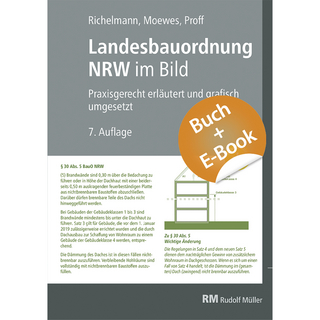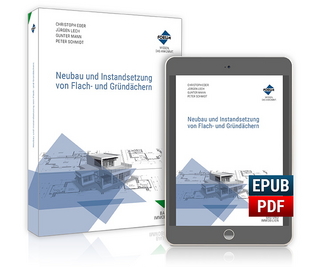
VSACC for Engineering Design and Graphics with SolidWorks 2019
Peachpit Press Publications
978-0-13-540177-4 (ISBN)
- Keine Verlagsinformationen verfügbar
- Artikel merken
The textbook has been updated to cover the new features in SolidWorks 2019, including a brand-new chapter with sample problems to help students prepare for the CSWA Exam. It focuses on the creation of engineering drawings, including dimensions and tolerances and the use of standard parts and tools. Each chapter contains step-by-step sample problems that show students how to apply the concepts presented in the chapter.
Effective pedagogy throughout the text helps students learn and retain concepts:
OBJECTIVES: Each chapter begins with objectives and an introduction to the material.
SUMMARIES: Each chapter concludes with a summary and exercise problems.
NUMEROUS ILLUSTRATIONS: The multitude of illustrations, accompanied by explanatory captions, present a visual approach to learning. Students see in the text what they see on the screen with the addition of explanatory text.
PRACTICAL APPLICATION: The text provides hundreds of exercise projects of varying difficulty (far more than any other computer graphics text). These exercises reinforce each chapter's content and help students learn by doing.
FLEXIBILITY: With the hundreds of problems presented in the book, instructors can assign different problems within the same class and from year to year without repeating problems for students.
MEETS STANDARDS: The text teaches ANSI standards for dimensions and tolerances. This helps students understand how their designs are defined for production and the importance of proper tolerancing.
STEP-BY-STEP APPROACH: In presenting the fundamentals of engineering drawing using SolidWorks, the text uses a step-by-step approach that allows students to work and learn at their own pace.
CSWA EXAM PREP: This edition includes sample problems to help students prepare for the CSWA Exam.
James D. Bethune taught drafting and Computer Aided-Design (CAD) for 39 years, twice winning the Outstanding Professor of the year award. He has an EdD in Education from Boston University and has written more than 25 books on drafting and CAD. While retired from full-time teaching, Jim continues to write textbooks on CAD. An avid golfer, Jim lives in East Greenwich, Rhode Island.
CHAPTER 1 Getting Started 1
1-1 Introduction 1
1-2 Starting a New Drawing 2
1-3 SolidWorks Colors 7
1-4 Creating a Fully Defined Circle 7
1-5 Units 12
1-6 Rectangle 13
1-7 Moving Around the Drawing Screen 16
1-8 Orientation 17
1-9 Sample Problem SP1-1 18
1-10 Creating 3D Models 23
1-11 Saving a Document 24
1-12 Lines and Angles - Sample Problem SP1-2 25
1-13 Holes 29
Chapter Projects 34
CHAPTER 2 Sketch Entities and Tools 41
2-1 Introduction 41
2-2 Mouse Gestures and the S Key 42
2-3 Origins 50
2-4 Circle 51
2-5 Rectangle 55
2-6 Slots 59
2-7 Perimeter Circle 63
2-8 Arcs 64
2-9 Polygons 67
2-10 Spline 69
2-11 Ellipse 71
2-12 Fillets and Chamfers 77
2-13 Sketch Text 80
2-14 Point 83
2-15 Trim Entities 83
2-16 Extend Entities 84
2-17 Offset Entities 86
2-18 Mirror Entities 88
2-19 Linear Sketch Pattern 90
2-20 Circular Sketch Pattern 93
2-21 Move Entities 95
2-22 Copy Entities 96
2-23 Rotate Entities 98
2-24 Scale Entities 99
2-25 Stretch Entities 100
2-26 Split Entities 102
2-27 Jog Lines 103
2-28 Centerline 105
2-29 Sample Problem SP2-1 106
2-30 Sample Problem SP2-2 108
2-31 Sample Problem SP2-3 110
Chapter Projects 113
CHAPTER 3 Features 123
3-1 Introduction 123
3-2 Extruded Boss/Base 123
3-3 Sample Problem SP3-1 128
3-4 Extruded Cut 131
3-5 Hole Wizard 132
3-6 A Second Method of Creating a Hole 134
3-7 Blind Holes 136
3-8 Fillet 140
3-9 Chamfer 147
3-10 Revolved Boss/Base 150
3-11 Revolved Cut 154
3-12 Reference Planes 155
3-13 Lofted Boss/Base 159
3-14 Shell 162
3-15 Swept Boss/Base 164
3-16 Draft 166
3-17 Linear Sketch Pattern 168
3-18 Circular Sketch Pattern 170
3-19 Mirror 171
3-20 Helix Curves and Springs 173
3-21 Compression Springs 175
3-22 Torsional Springs 178
3-23 Extension Springs 181
3-24 Wrap 185
3-25 Editing Features 189
3-26 Sample Problem SP3-2 191
3-27 Sample Problem SP3-3 199
3-28 Curve Driven Patterns 202
Chapter Projects 208
CHAPTER 4 Orthographic Views 225
4-1 Introduction 225
4-2 Third- and First-Angle Projections 227
4-3 Fundamentals of Orthographic Views 228
4-4 Drawing Orthographic Views Using SolidWorks 236
4-5 Section Views 246
4-6 Drawing a Section View Using SolidWorks 248
4-7 Aligned Section Views 254
4-8 Broken Views 255
4-9 Detail Views 257
4-10 Auxiliary Views 259
4-11 Art 262
Chapter Projects 265
CHAPTER 5 Assemblies 301
5-1 Introduction 301
5-2 Starting an Assembly Drawing 301
5-3 Move Component 304
5-4 Rotate Component 305
5-5 Mouse Gestures for Assembly Drawings 305
5-6 Mate 307
5-7 Bottom-up Assemblies 312
5-8 Creating an Exploded Isometric Assembly Drawing 317
5-9 Creating an Exploded Isometric Drawing Using the Drawing Format 320
5-10 Assembly Numbers 322
5-11 Bill of Materials (BOM or Parts List) 324
5-12 Title Blocks 331
5-13 Animate Collapse 335
5-14 Sample Problem 5-1: Creating the Rotator Assembly 337
5-15 Using the SolidWorks Motion Study Tool 340
5-16 Editing a Part within an Assembly 343
5-17 Interference Detection/Clearance Verification 345
Chapter Projects 353
CHAPTER 6 Threads and Fasteners 377
6-1 Introduction 377
6-2 Thread Terminology 377
6-3 Thread Callouts-ANSI Metric Units 378
6-4 Thread Callouts-ANSI Unified Screw Threads 379
6-5 Thread Representations 380
6-6 Internal Threads-Inches 380
6-7 Threaded Blind Holes-Inches 383
6-8 Internal Threads-Metric 384
6-9 Accessing the Design Library 386
6-10 Thread Pitch 387
6-11 Determining an External Thread Length-Inches 387
6-12 Smart Fasteners 392
6-13 Determining an Internal Thread Length 395
6-14 Set Screws 399
6-15 Drawing a Threaded Hole in the Side of a Cylinder 400
6-16 Adding Set Screws to the Collar 404
Chapter Projects 406
CHAPTER 7 Dimensioning 441
7-1 Introduction 441
7-2 Terminology and Conventions-ANSI 442
7-3 Adding Dimensions to a Drawing 444
7-4 Drawing Scale 453
7-5 Units 454
7-6 Dimensioning Holes and Fillets 459
7-7 Dimensioning Counterbored and Countersunk Holes 462
7-8 Angular Dimensions 473
7-9 Ordinate Dimensions 478
7-10 Baseline Dimensions 481
7-11 Locating Dimensions 485
7-12 Fillets and Rounds 486
7-13 Rounded Shapes-Internal 486
7-14 Rounded Shapes-External 487
7-15 Irregular Surfaces 488
7-16 Polar Dimensions 489
7-17 Chamfers 490
7-18 Symbols and Abbreviations 490
7-19 Symmetrical and Centerline Symbols 492
7-20 Dimensioning to a Point 492
7-21 Dimensioning Section Views 493
7-22 Dimensioning Orthographic Views 493
Chapter Projects 495
CHAPTER 8 Tolerancing 511
8-1 Introduction 511
8-2 Direct Tolerance Methods 511
8-3 Tolerance Expressions 513
8-4 Understanding Plus and Minus Tolerances 513
8-5 Creating Plus and Minus Tolerances 514
8-6 Creating Limit Tolerances 517
8-7 Creating Angular Tolerances 518
8-8 Standard Tolerances 520
8-9 Double Dimensioning 520
8-10 Chain Dimensions and Baseline Dimensions 522
8-11 Tolerance Studies 524
8-12 Rectangular Dimensions 525
8-13 Hole Locations 525
8-14 Choosing a Shaft for a Toleranced Hole 527
8-15 Sample Problem SP8-1 528
8-16 Sample Problem SP8-2 529
8-17 Nominal Sizes 530
8-18 Standard Fits (Metric Values) 530
8-19 Standard Fits (Inch Values) 531
8-20 Preferred and Standard Sizes 533
8-21 Surface Finishes 535
8-22 Surface Control Symbols 536
8-23 Applying Surface Control Symbols 537
8-24 Design Problems 540
8-25 Geometric Tolerances 545
8-26 Tolerances of Form 545
8-27 Flatness 545
8-28 Straightness 546
8-29 Straightness (RFS and MMC) 547
8-30 Circularity 550
8-31 Cylindricity 551
8-32 Geometric Tolerances Using SolidWorks 552
8-33 Datums 552
8-34 Tolerances of Orientation 556
8-35 Perpendicularity 557
8-36 Parallelism 559
8-37 Angularity 559
8-38 Profiles 560
8-39 Runouts 562
8-40 Positional Tolerances 563
8-41 Creating Positional Tolerances Using SolidWorks 565
8-42 Virtual Condition 568
8-43 Floating Fasteners 569
8-44 Sample Problem SP8-3 570
8-45 Sample Problem SP8-4 571
8-46 Fixed Fasteners 571
8-47 Sample Problem SP8-5 572
8-48 Design Problems 573
Chapter Projects 577
CHAPTER 9 Bearings and Fit Tolerances 607
9-1 Introduction 607
9-2 Sleeve Bearings 608
9-3 Bearings from the Toolbox 611
9-4 Ball Bearings 614
9-5 Fits and Tolerances for Bearings 616
9-6 Fits-Inches 616
9-7 Clearance Fits 616
9-8 Hole Basis 617
9-9 Shaft Basis 617
9-10 Sample Problem SP9-1 617
9-11 Interference Fits 618
9-12 Manufactured Bearings 619
9-13 Fit Tolerances-Millimeters 623
Chapter Projects 624
CHAPTER 10 Gears 641
10-1 Introduction 641
10-2 Gear Terminology 642
10-3 Gear Formulas 643
10-4 Creating Gears Using SolidWorks 644
10-5 Gear Ratios 650
10-6 Gears and Bearings 651
10-7 Power Transmission-Shaft to Gear 653
10-8 Set Screws and Gear Hubs 653
10-9 Keys, Keyseats, and Gears 658
10-10 Sample Problem 10-1-Support Plates 667
10-11 Rack and Pinion Gears 673
10-12 Metric Gears 675
Chapter Projects 678
CHAPTER 11 CSWA Preparation 701
11-1 Introduction 701
11-2 Working with Cubes 702
11-3 Drawing Profiles 703
11-4 Drawing Small 3D Objects 707
11-5 Drawing Larger Objects 712
11-6 Drawing Auxiliary Views 720
11-7 Drawing Break Views 722
11-8 Drawing Section Views 724
11-9 Drawing Detail Views 727
11-10 Drawing Lines and Views 729
11-11 Drawing Assembly Drawings 732
APPENDIX 735
INDEX 747
| Erscheint lt. Verlag | 28.8.2019 |
|---|---|
| Verlagsort | Berkeley |
| Sprache | englisch |
| Themenwelt | Technik |
| ISBN-10 | 0-13-540177-1 / 0135401771 |
| ISBN-13 | 978-0-13-540177-4 / 9780135401774 |
| Zustand | Neuware |
| Informationen gemäß Produktsicherheitsverordnung (GPSR) | |
| Haben Sie eine Frage zum Produkt? |
aus dem Bereich


